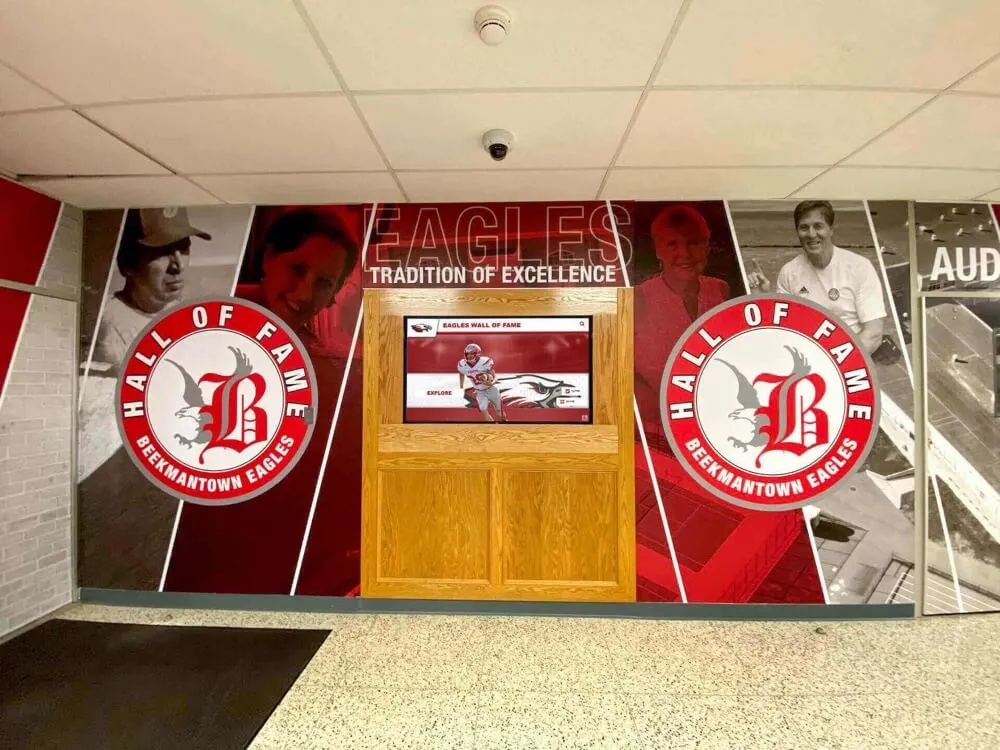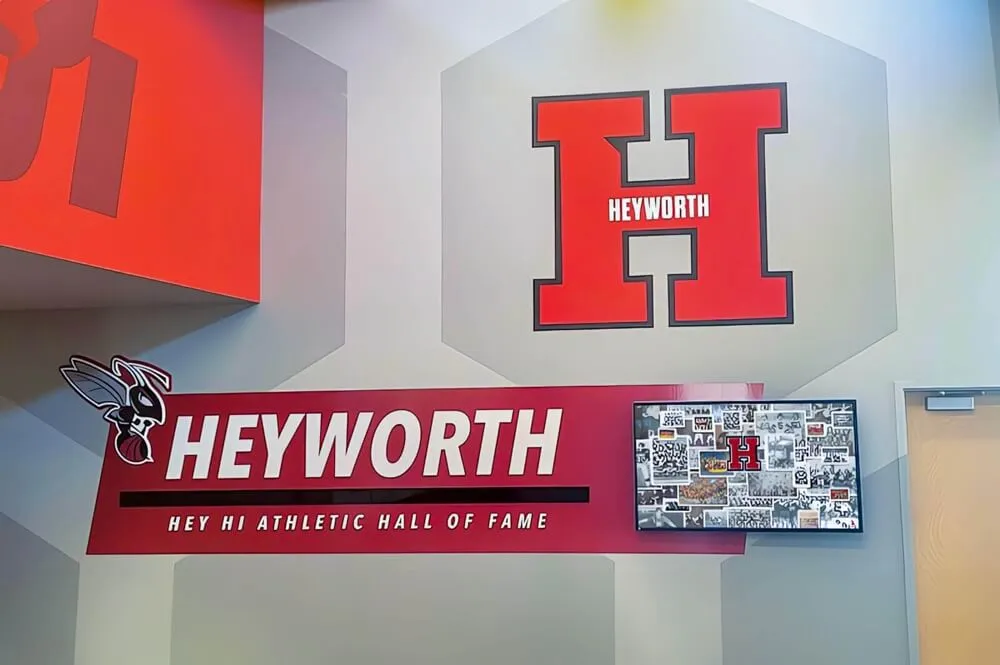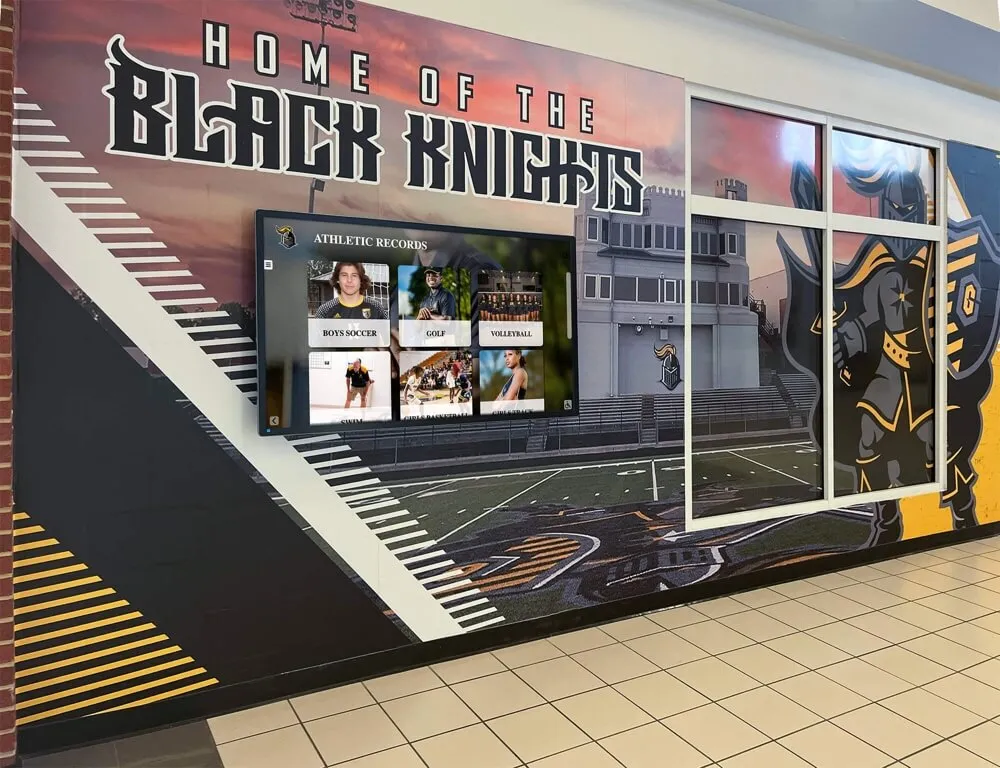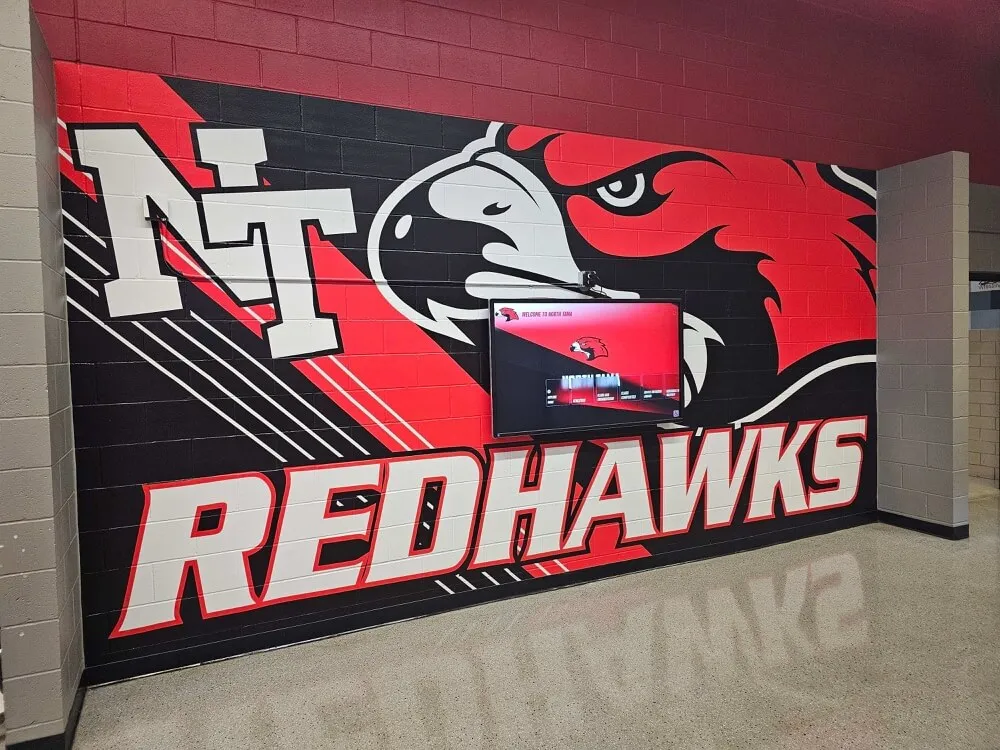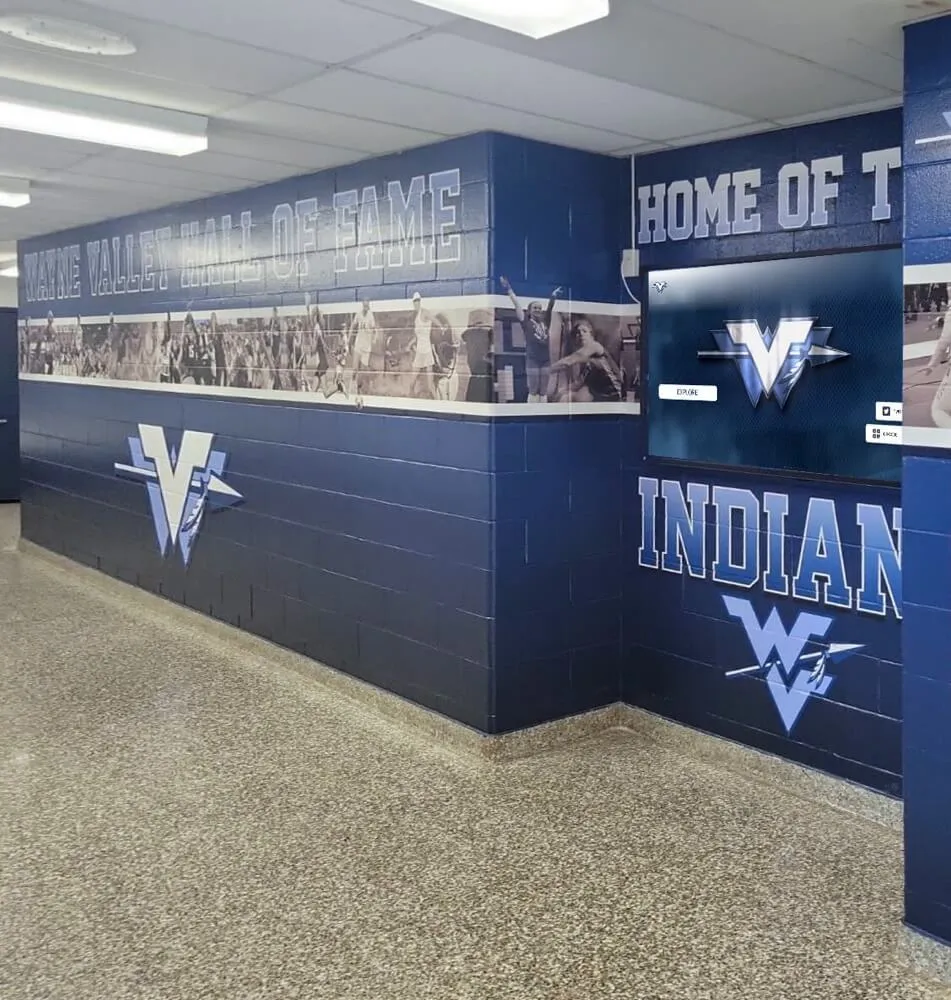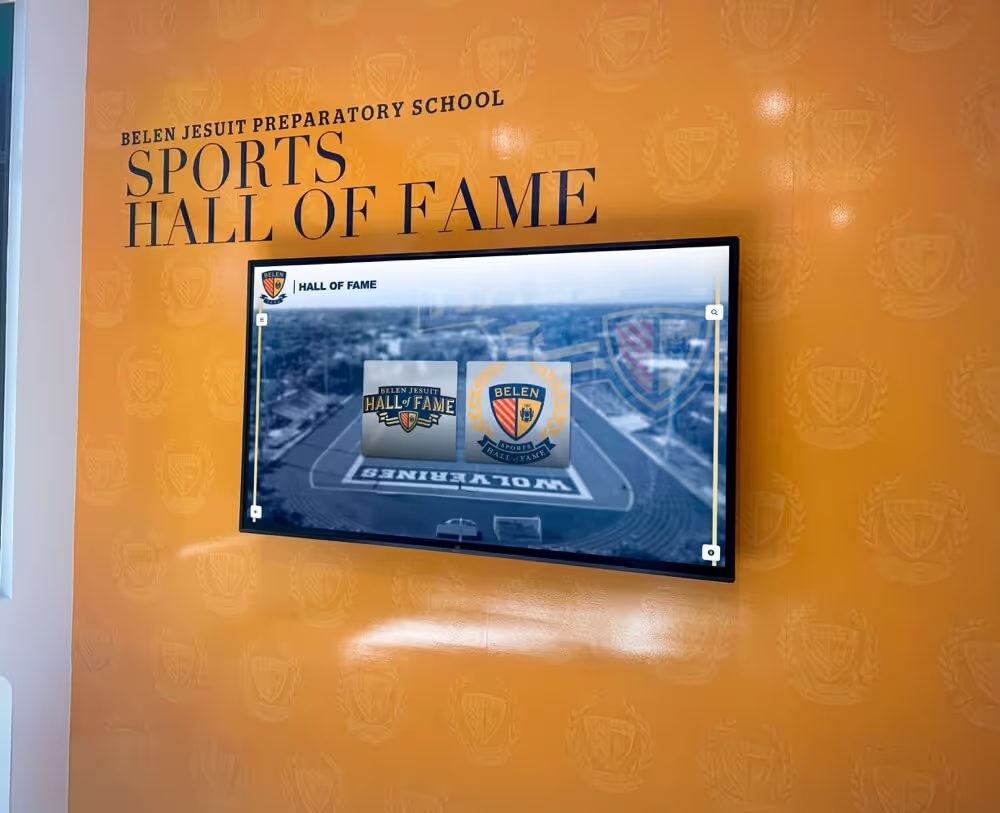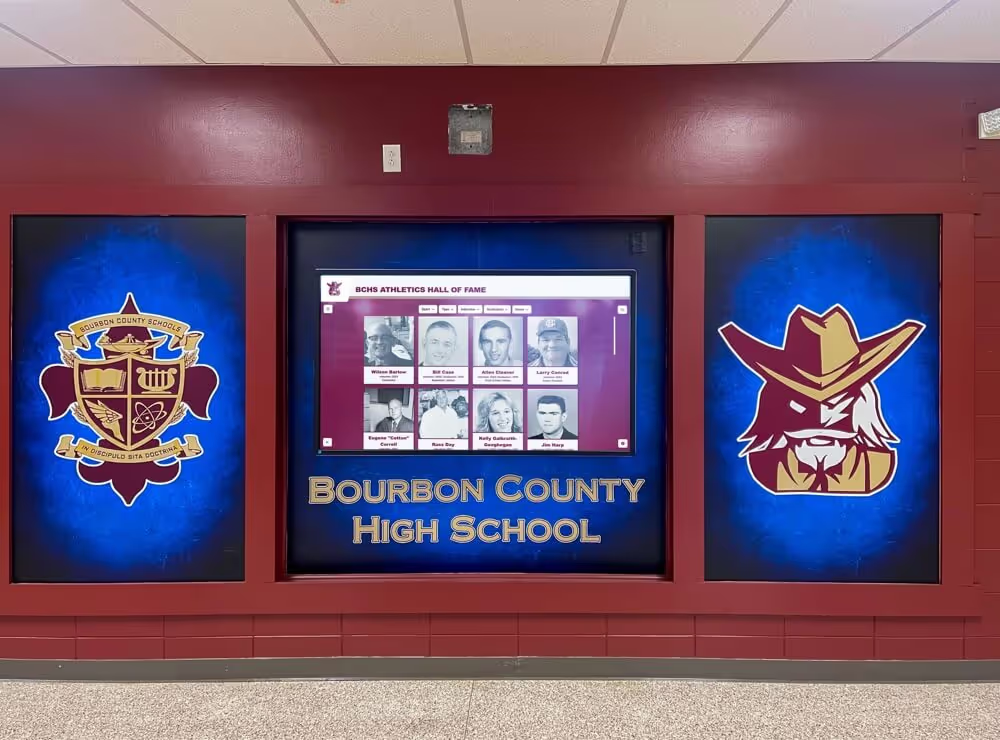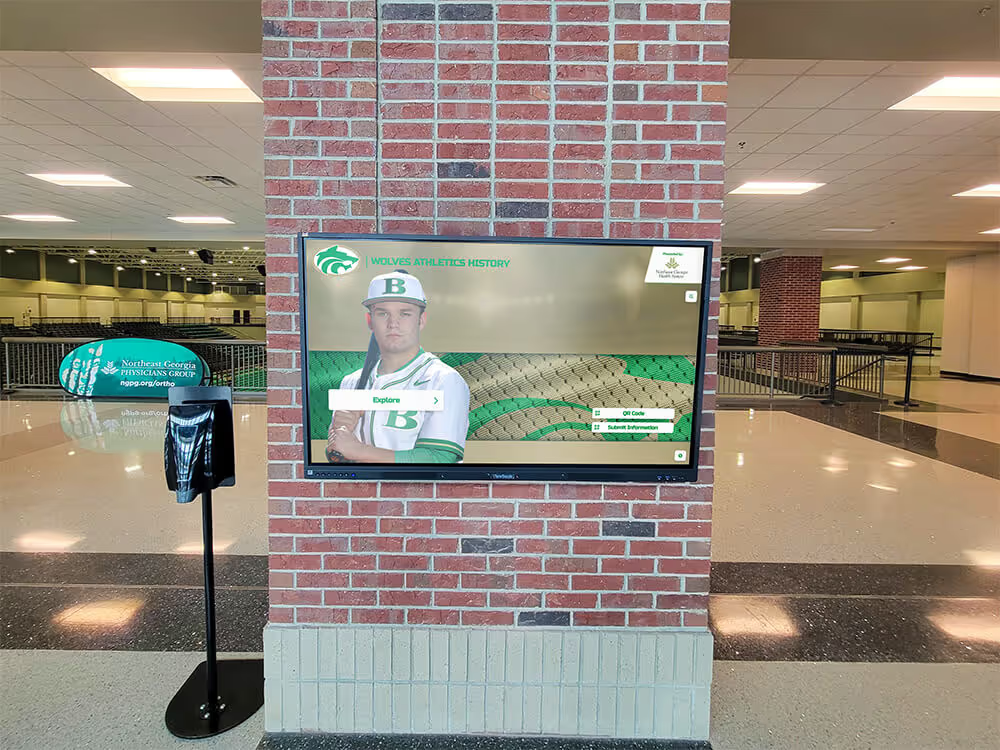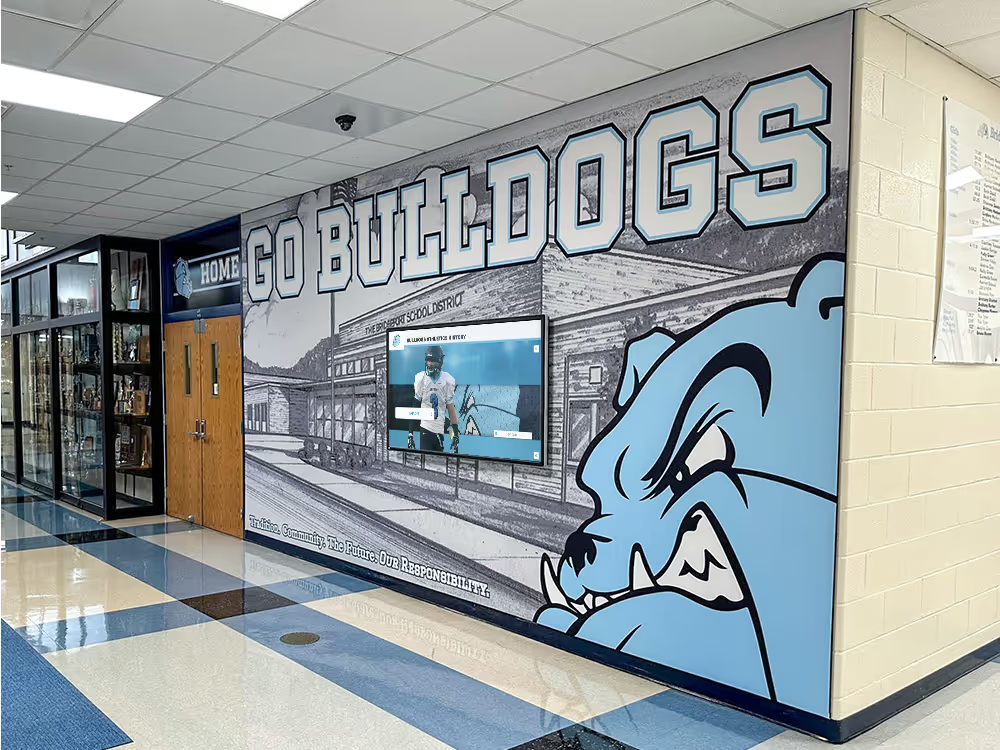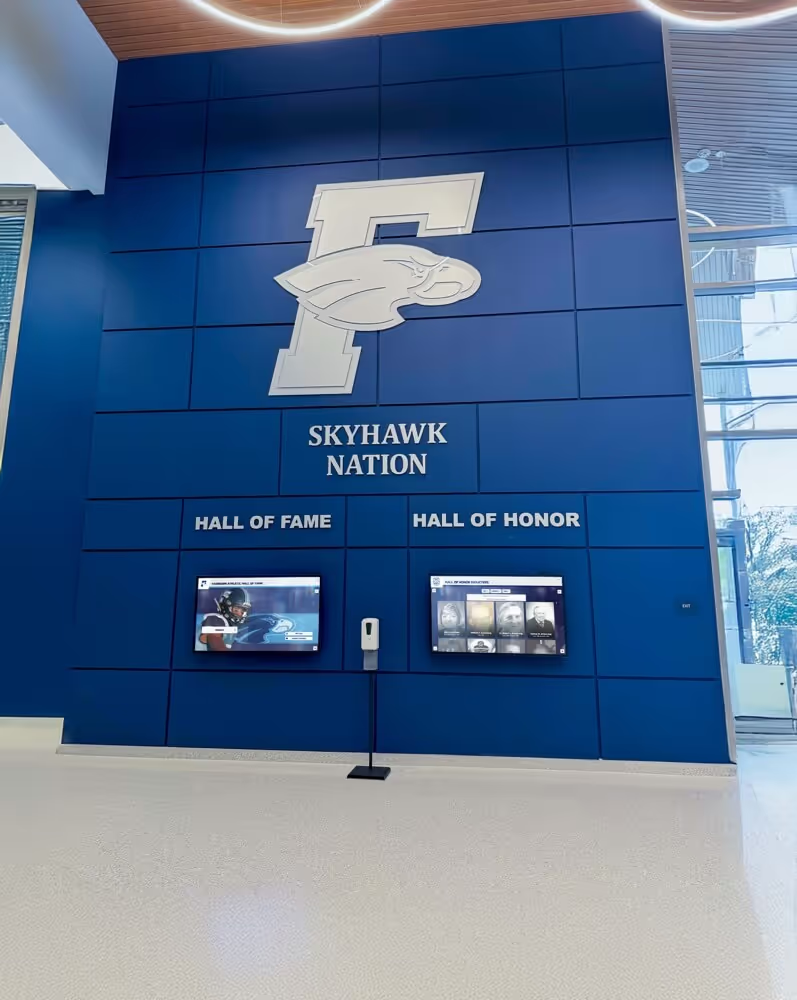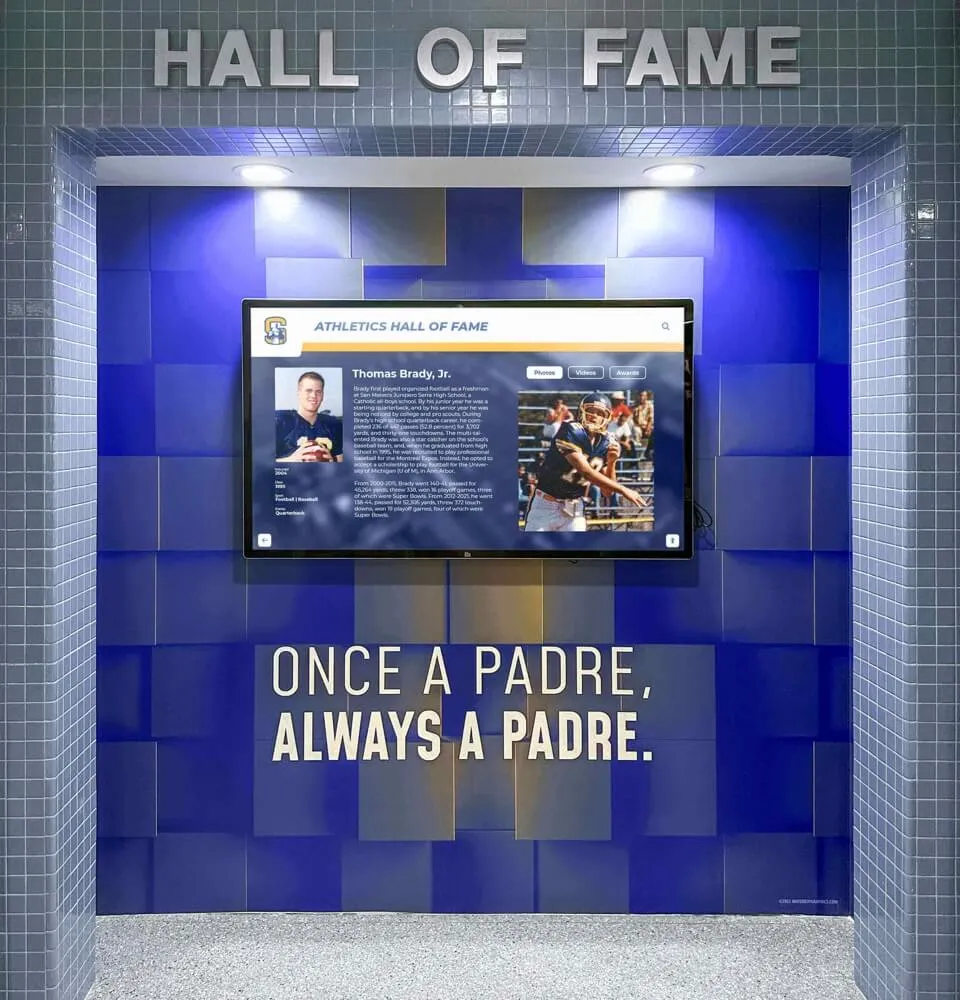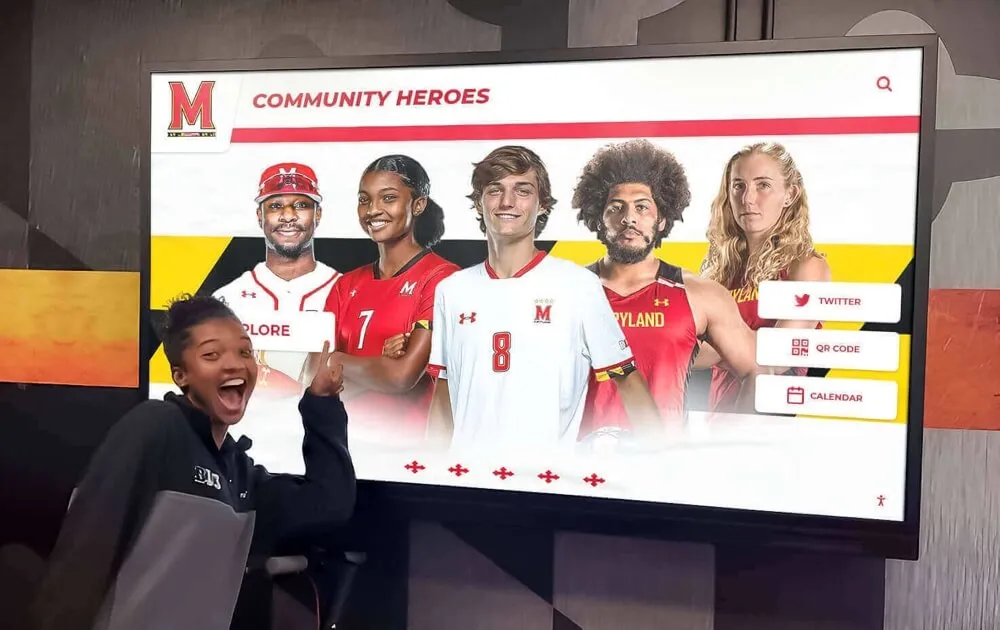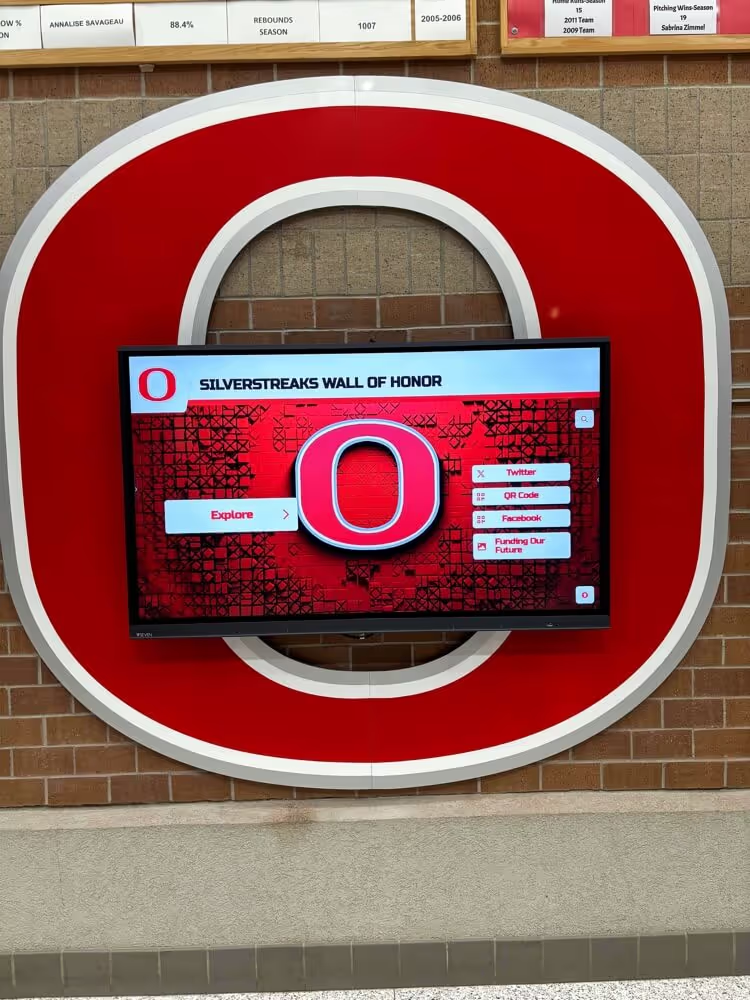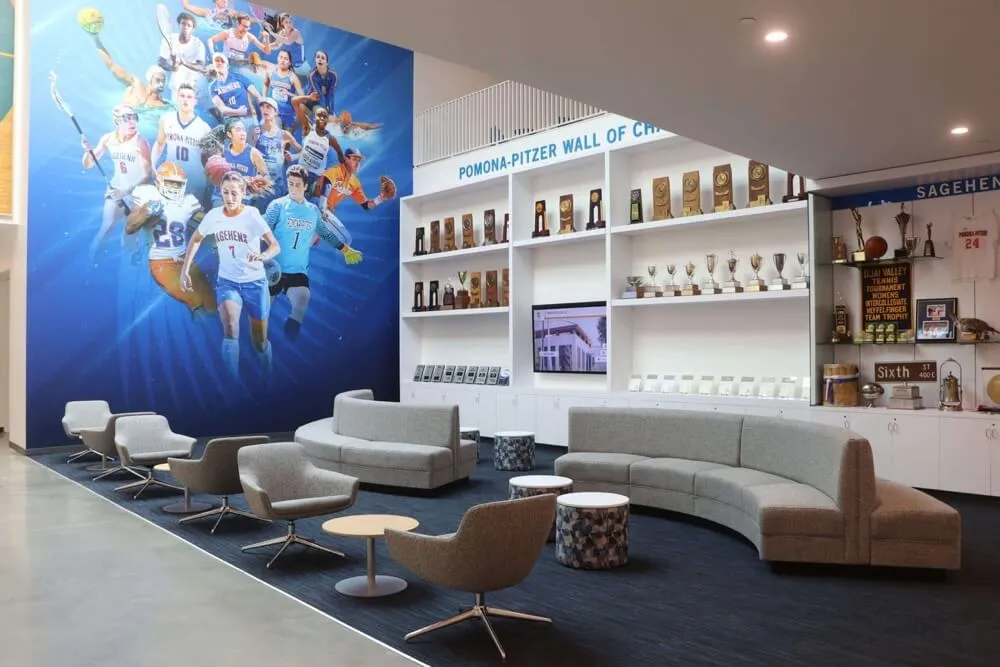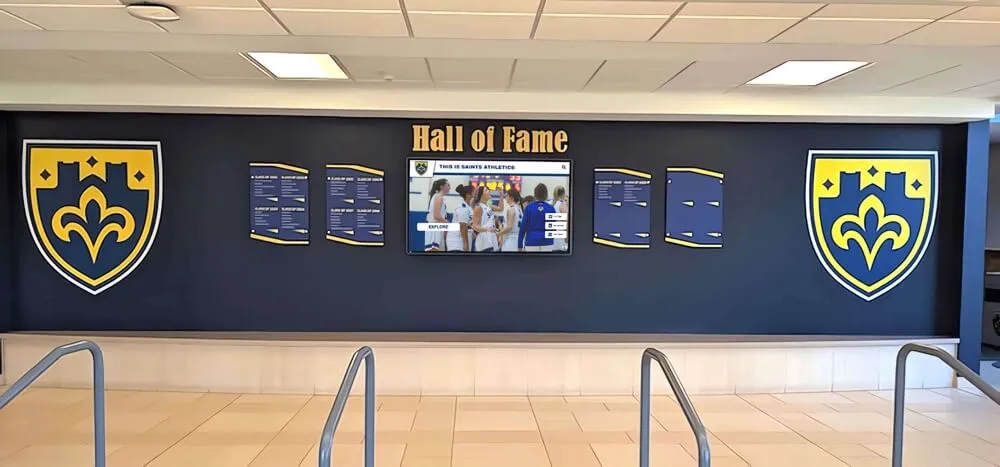Interactive Touchscreen Software: Transforming Recognition Displays
In an era where digital engagement is paramount, traditional static displays no longer captivate audiences effectively. Interactive touchscreen software has revolutionized how institutions honor achievements, recognize contributors, and showcase history.
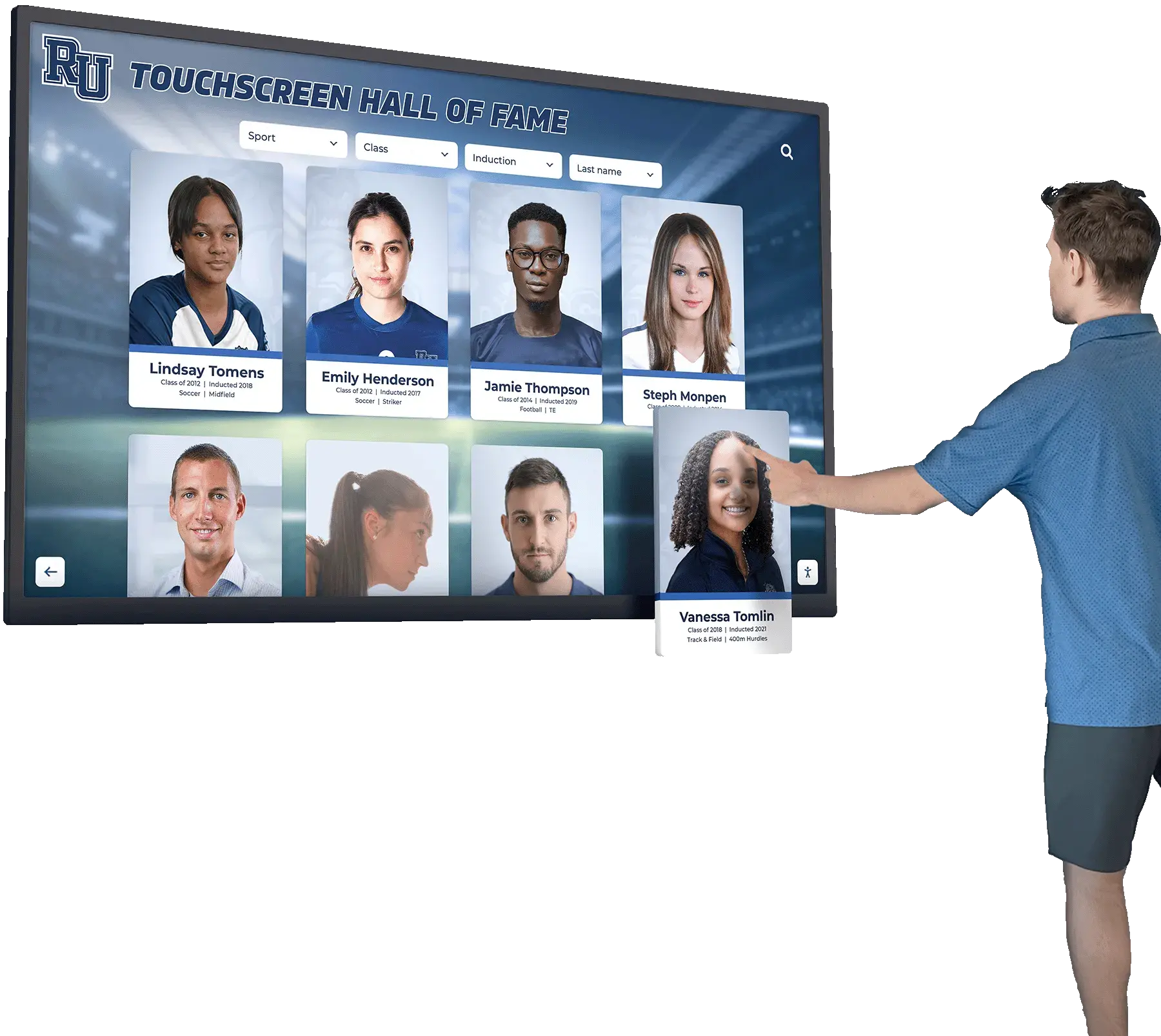
Among the solutions available today, Rocket Alumni Solutions has emerged as the industry frontrunner, serving over 1,000 organizations with their innovative digital display platform.
This comprehensive guide explores how Rocket’s digital halls of fame software is transforming recognition displays across schools, universities, corporations, and non-profit organizations nationwide.
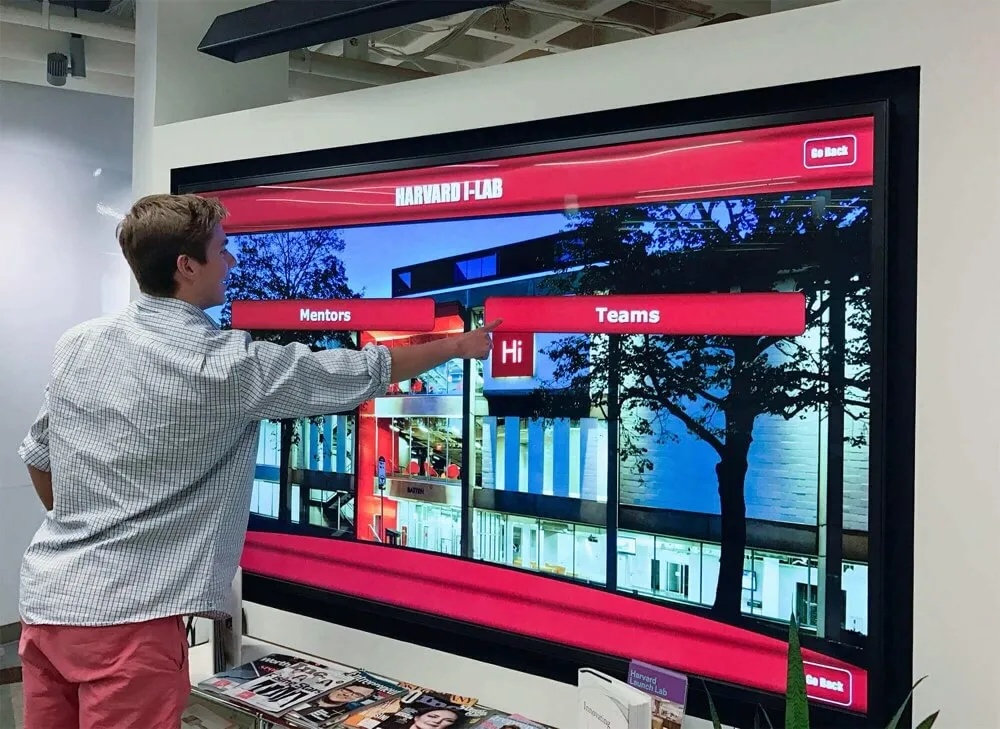
Harvard Labs interactive display
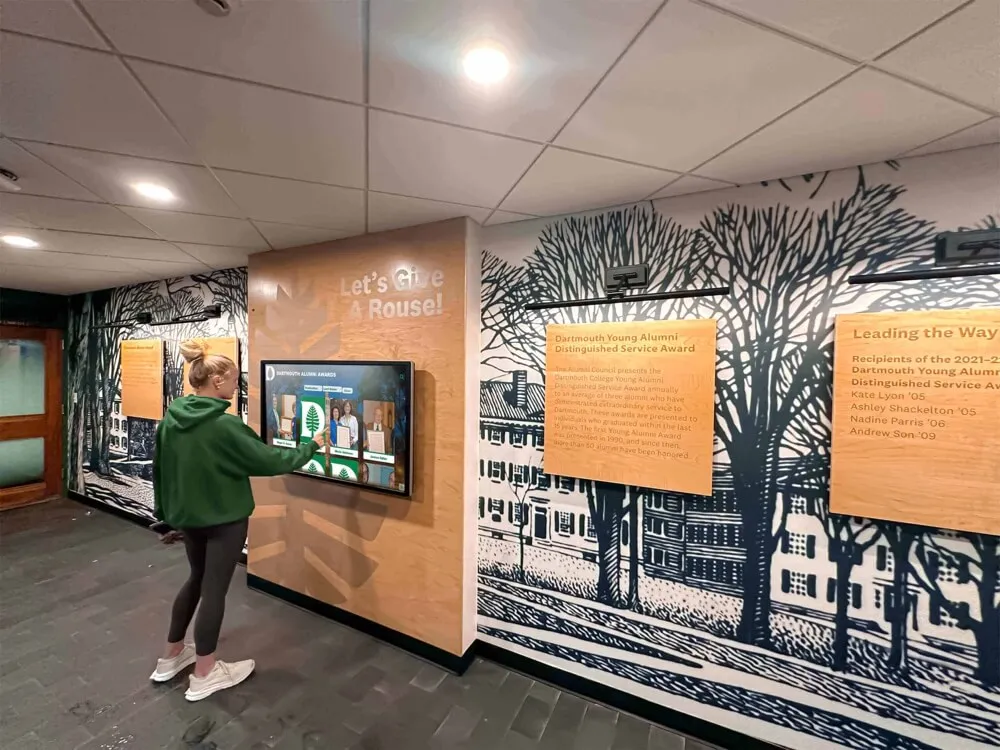
Dartmouth University recognition wall
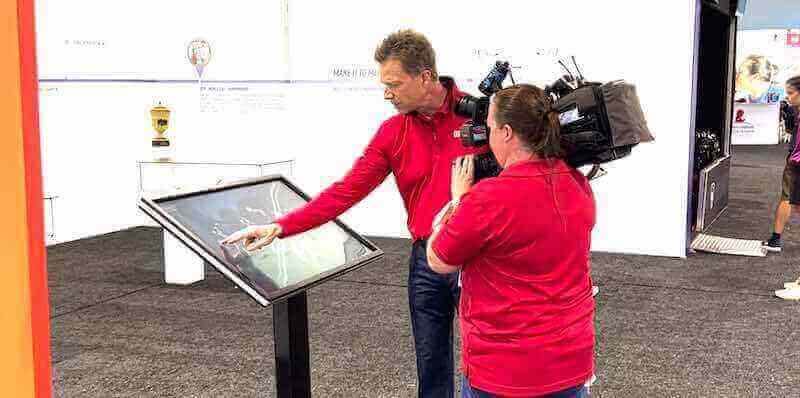
PGA Tour interactive kiosk installation
The Evolution of Recognition Displays: From Static to Interactive
Static plaques and photo displays have served organizations well for decades, but they come with significant limitations:
- 🔍 Limited space requires difficult decisions about what to include
- 🔄 Updating requires physical replacement or modification
- 👁️ Viewer engagement remains passive and brief
- 📏 Content depth is restricted to what fits physically
- ♿ Accessibility challenges for viewers with disabilities
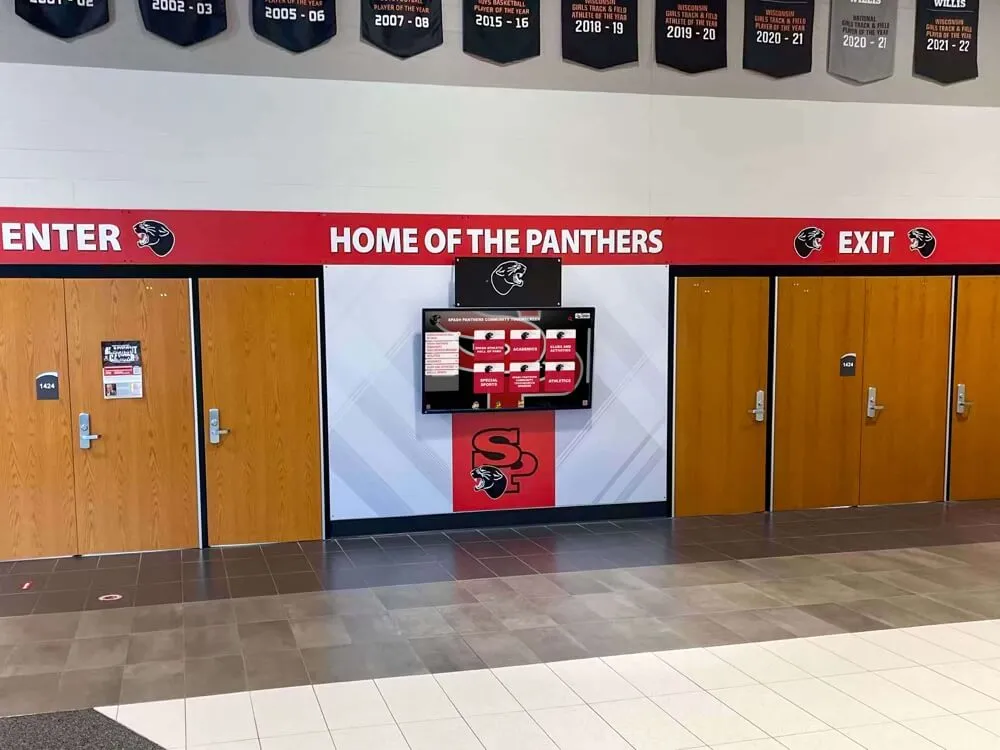
Interactive touchscreen displays powered by sophisticated software eliminate these constraints, creating dynamic, engaging experiences that invite exploration while simplifying content management.
Did You Know?
Organizations report visitors spending 4-6 times longer engaging with interactive displays compared to traditional static recognition walls.
Key Components of Superior Touchscreen Software
When evaluating interactive alumni display solutions, organizations should prioritize these critical features that distinguish exceptional platforms like Rocket’s:
Cloud-Based Management System
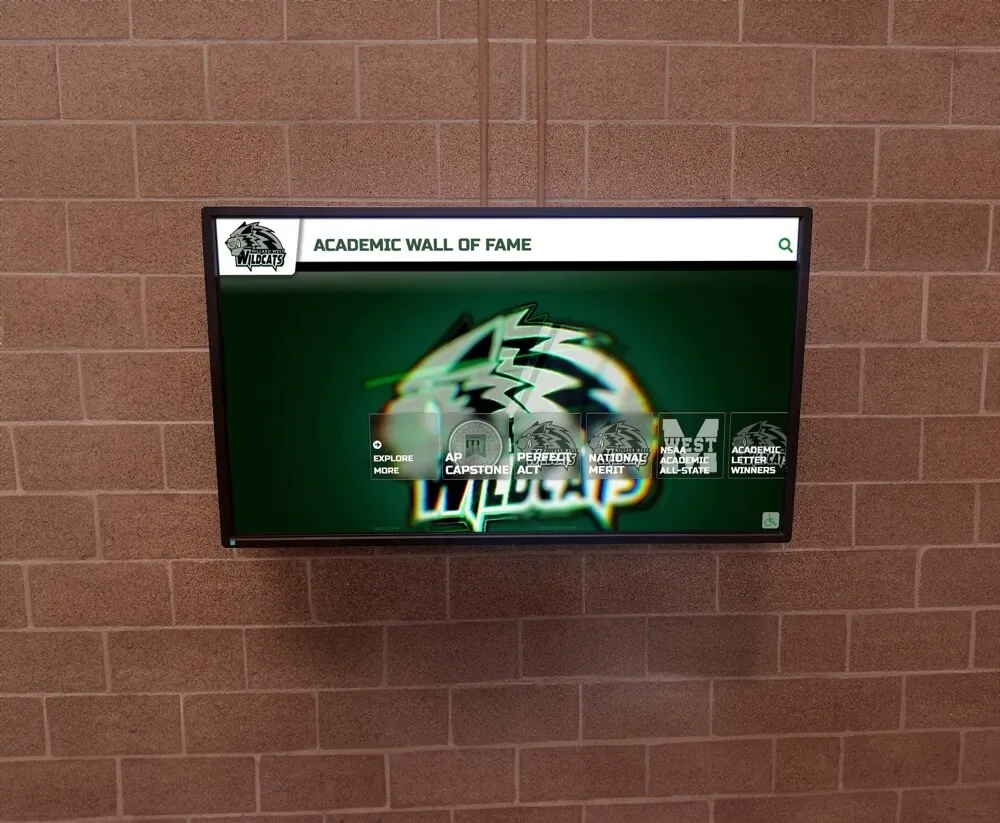
Rocket’s platform offers remote content management capabilities that set it apart:
- Real-time updates from any internet-connected device
- Multi-user permission levels for content oversight
- Automatic backup and version history
- No technical expertise required for standard updates
User Experience Design
The interface visitors interact with determines engagement levels:
Intuitive Navigation
Easy-to-use interfaces for all age groups
Responsive Design
Adapts to different screen sizes
ADA Compliance
Accessibility features for all users
Multilingual Support
Content available in multiple languages
Integration Capabilities
Powerful software should connect seamlessly with:
- Database systems for automated roster updates
- Existing hardware when compatible
- Social media platforms for content sharing
- Analytics tools for visitor engagement metrics
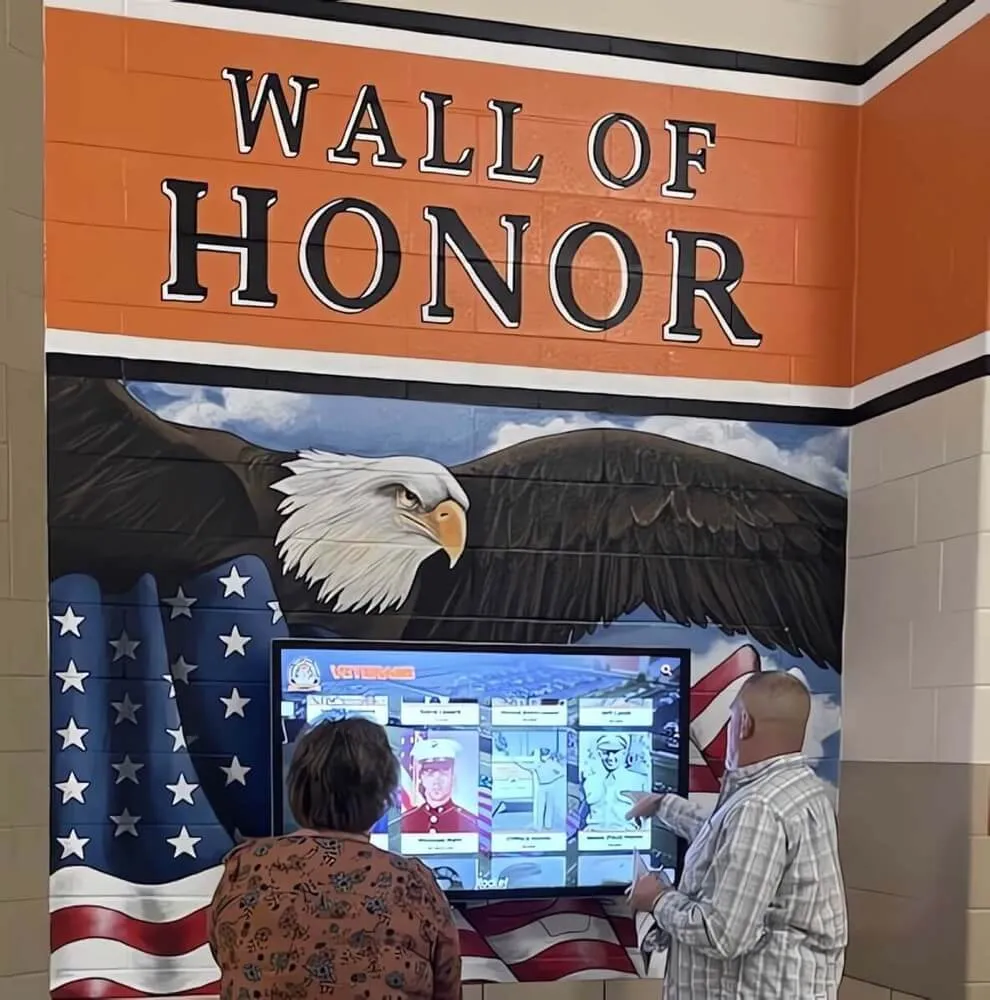
Application Scenarios: Digital Recognition Solutions
Rocket’s touchscreen hall of fame software excels across multiple use cases:
Digital Donor Recognition Walls
Transform fundraising recognition with interactive experiences that:
- Showcase donation impact through multimedia storytelling
- Categorize contributors by giving level with easy filtering
- Update campaign progress in real-time
- Integrate "donate now" functionality
- Display donor testimonials and personal stories
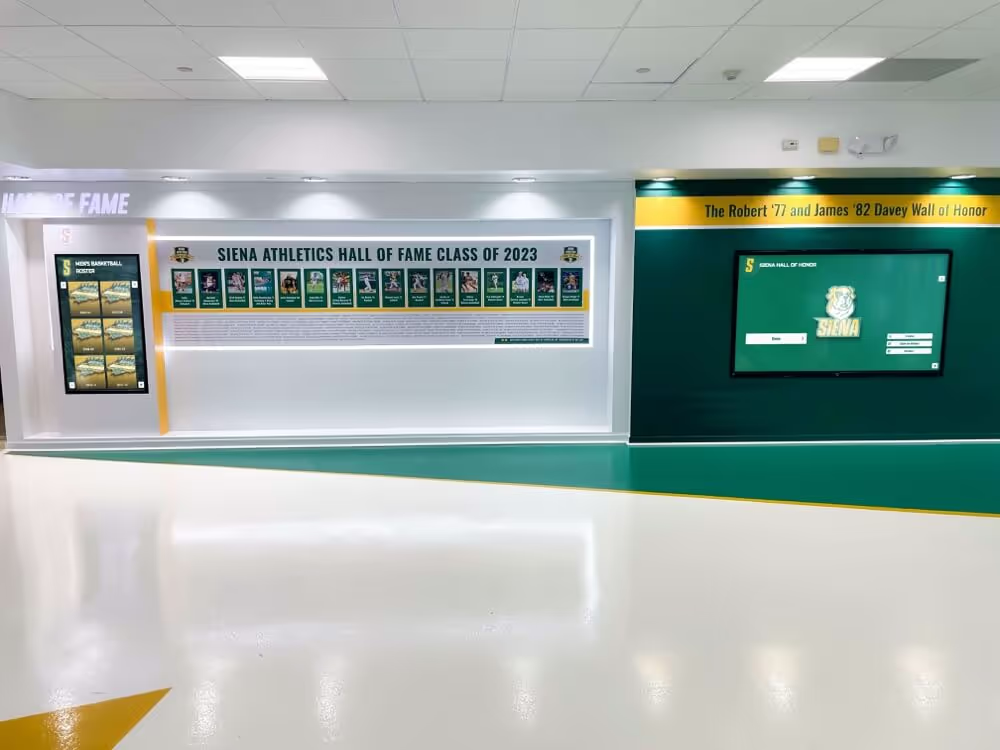
Athletic Achievement Displays
Create compelling digital trophy cases that celebrate sporting excellence:
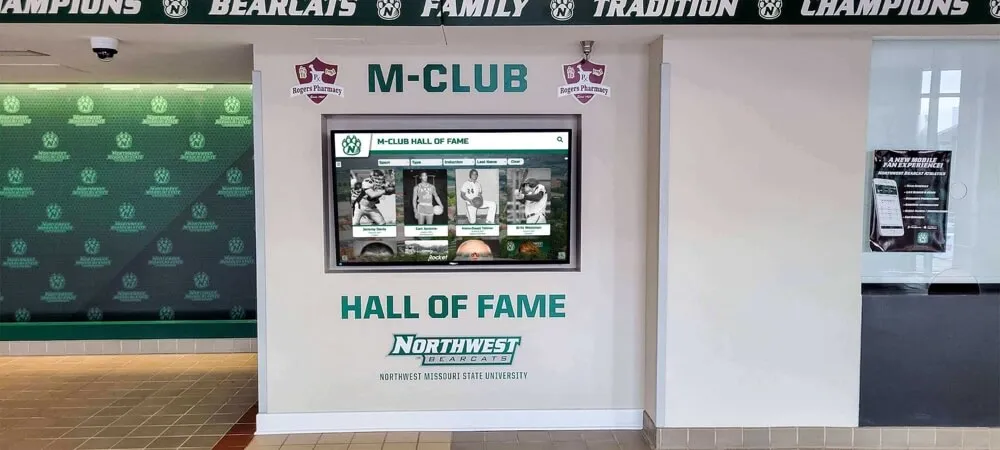
- Interactive team rosters and historical records
- Multimedia highlights of championship moments
- Searchable athlete profiles and statistics
- Timeline-based exploration of program history
- Integration with live scoring systems
Learn more about sport-specific implementations at halloffamewall.com
Corporate Recognition Centers
Businesses leverage Rocket’s platform to enhance workplace culture through:
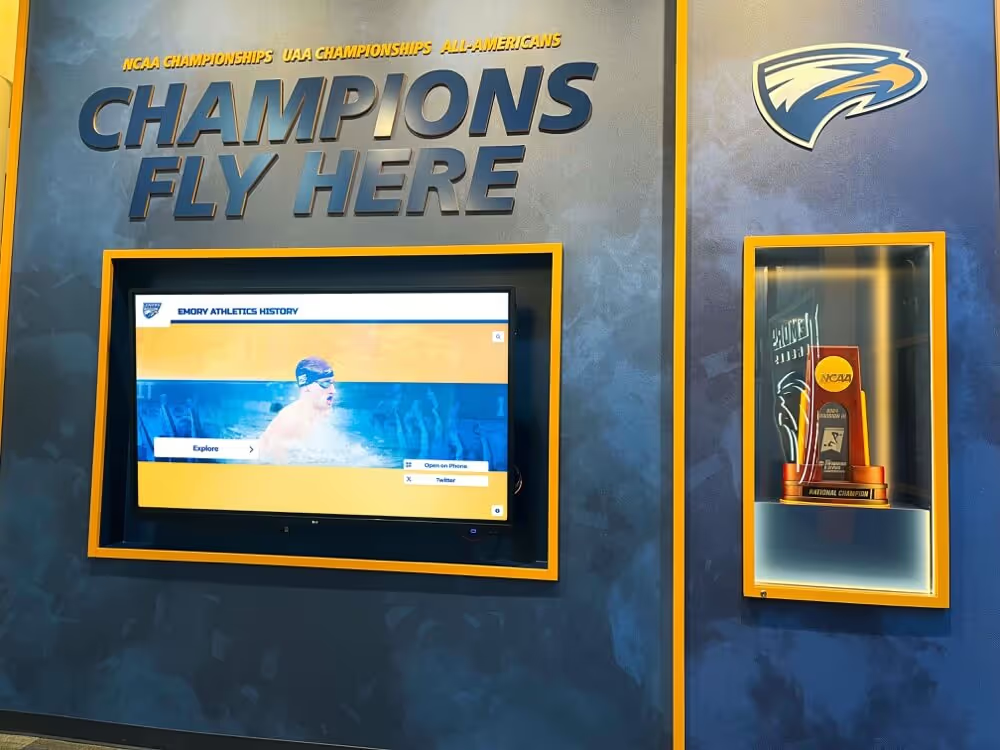
- Employee achievement recognition
- Company timeline and milestone displays
- Customer testimonial showcases
- Interactive brand storytelling
- Values and mission reinforcement
Academic Honor Displays
Educational institutions implement interactive alumni displays that:
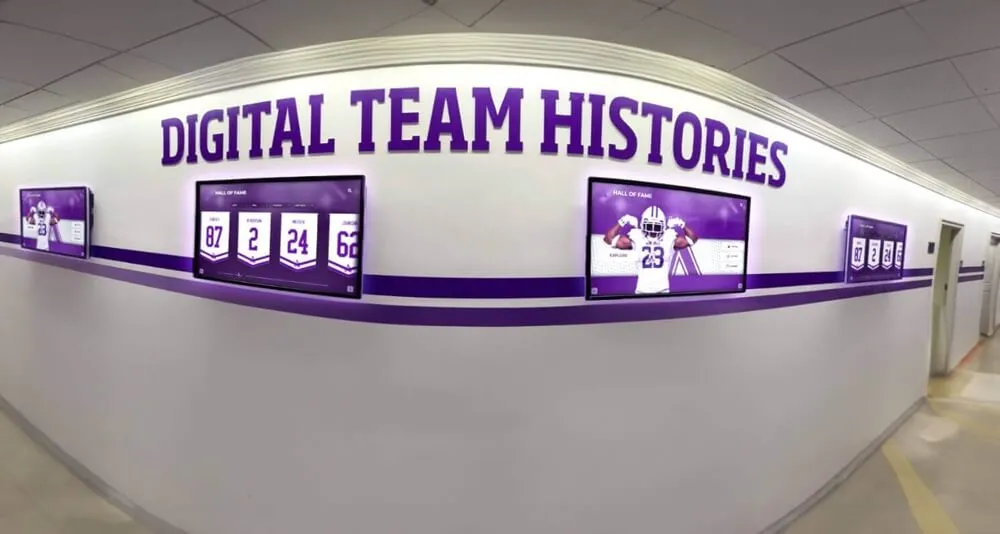
Amherst College recognition display
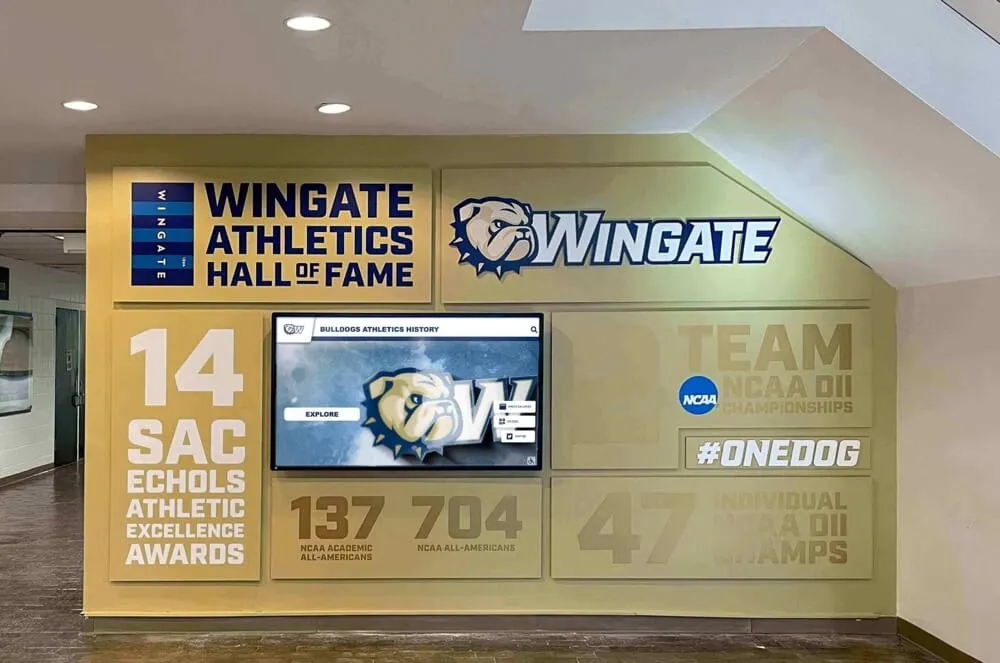
Wingate University interactive installation
- Highlight distinguished alumni accomplishments
- Showcase scholarship recipients and academic competitions
- Present department-specific achievements
- Display graduation class information digitally
- Connect current students with alumni networks
Explore education-focused examples at touchwall.us
Historical Archives and Museum Exhibits
Organizations preserve and present their history through:
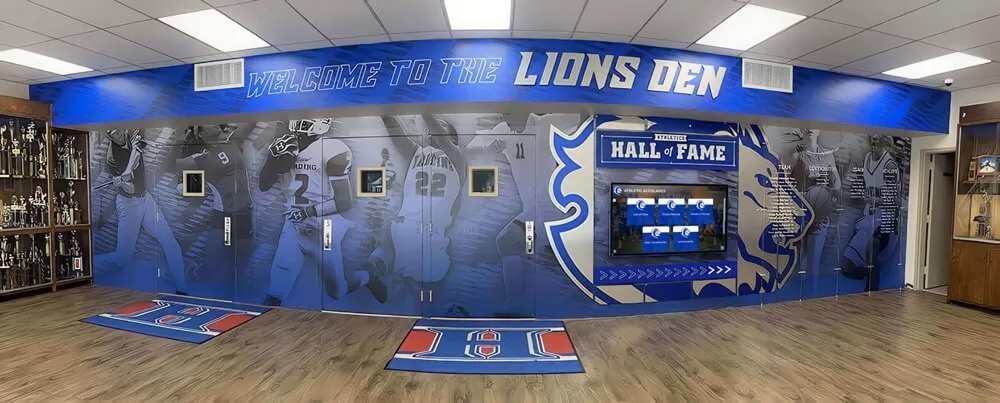
- Interactive timelines with rich media integration
- Searchable document and photo archives
- Oral history video collections
- Before-and-after visual comparisons
- Thematic exploration paths
Implementation Considerations
Organizations considering digital donor recognition wall solutions should evaluate:
Hardware Requirements
While Rocket offers optimized hardware packages, their software can potentially run on:
Content Development
Successful implementation relies on effective content strategies:
- Professional photography and video production
- Consistent biographical information templates
- Engaging written narratives
- Logical information architecture
- Regular content refreshment schedules
Installation Environment
Physical considerations affect user experience:
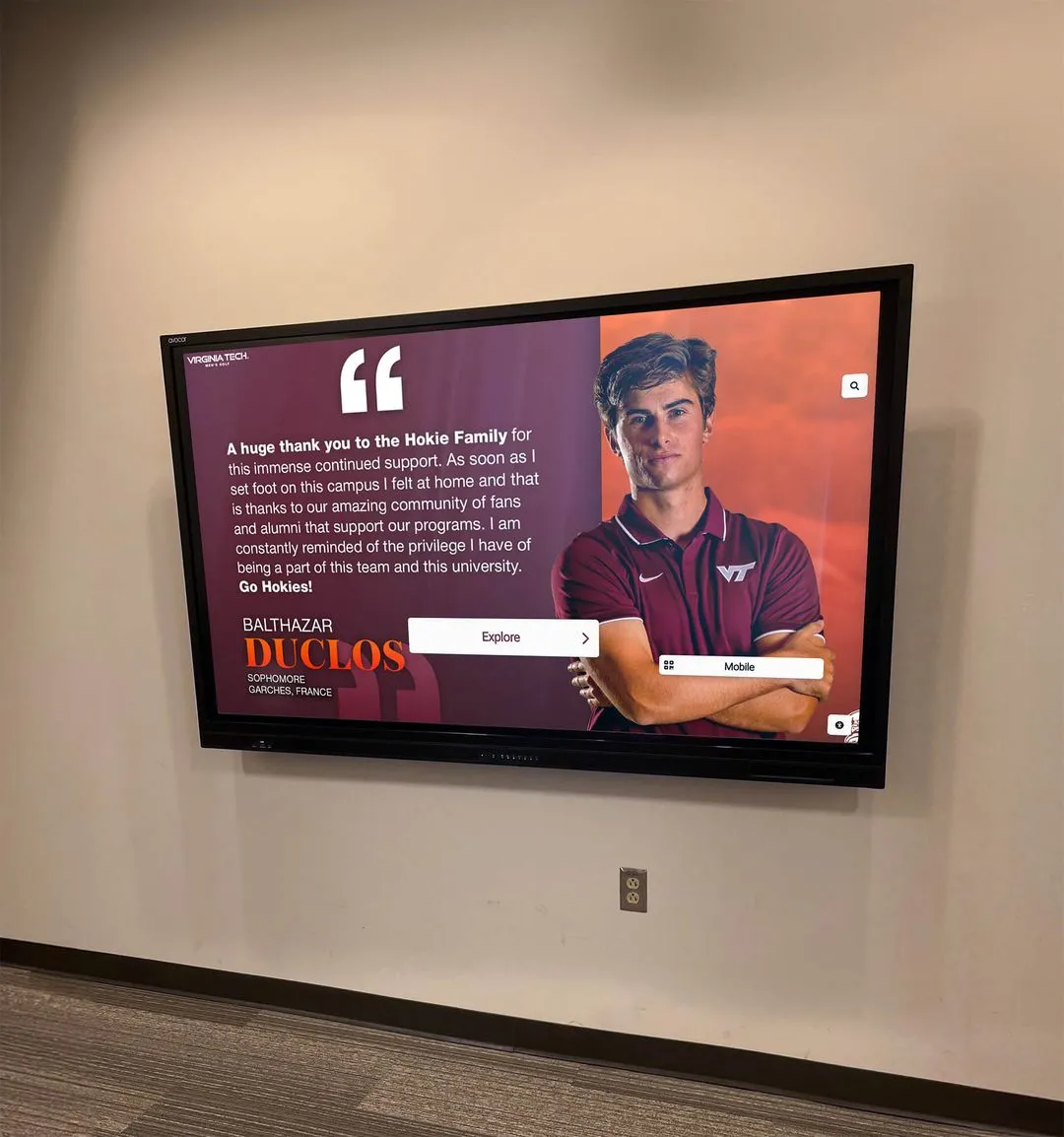
- Proper mounting height and accessibility
- Ambient lighting conditions
- Interactive zone spacing
- Supporting signage and instructions
- Physical security requirements
Future Trends in Interactive Recognition Software
The touchscreen hall of fame industry continues evolving with:
Gesture Control
Interaction beyond traditional touch
Mobile Integration
Companion apps enhance the experience
Augmented Reality
AR layers add depth to displays
Voice Commands
Improved accessibility options
Advanced Analytics
Detailed visitor engagement metrics
See examples of these emerging technologies at touchhalloffame.us
Evaluating Return on Investment
Organizations implementing Rocket’s interactive alumni display software report multiple benefits:
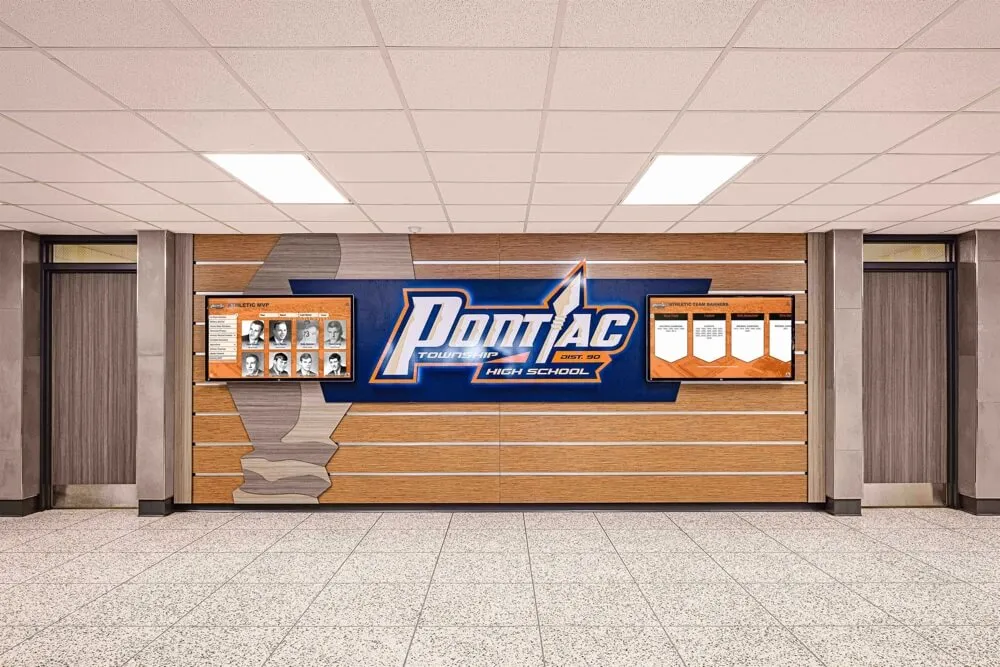
- Increased visitor engagement time (typically 4-6× longer than static displays)
- Enhanced donor satisfaction and recognition
- Reduced long-term maintenance costs compared to physical displays
- Flexibility to repurpose and update content as needed
- Modernized institutional image
Choosing the Right Solution Provider
When selecting an interactive touchscreen software partner, consider:
Industry experience and specialization
Implementation support services
Ongoing technical assistance
Content development resources
Client testimonials and references
Rocket Alumni Solutions excels in each category, making them the preferred provider for organizations seeking reliable, powerful digital halls of fame solutions.
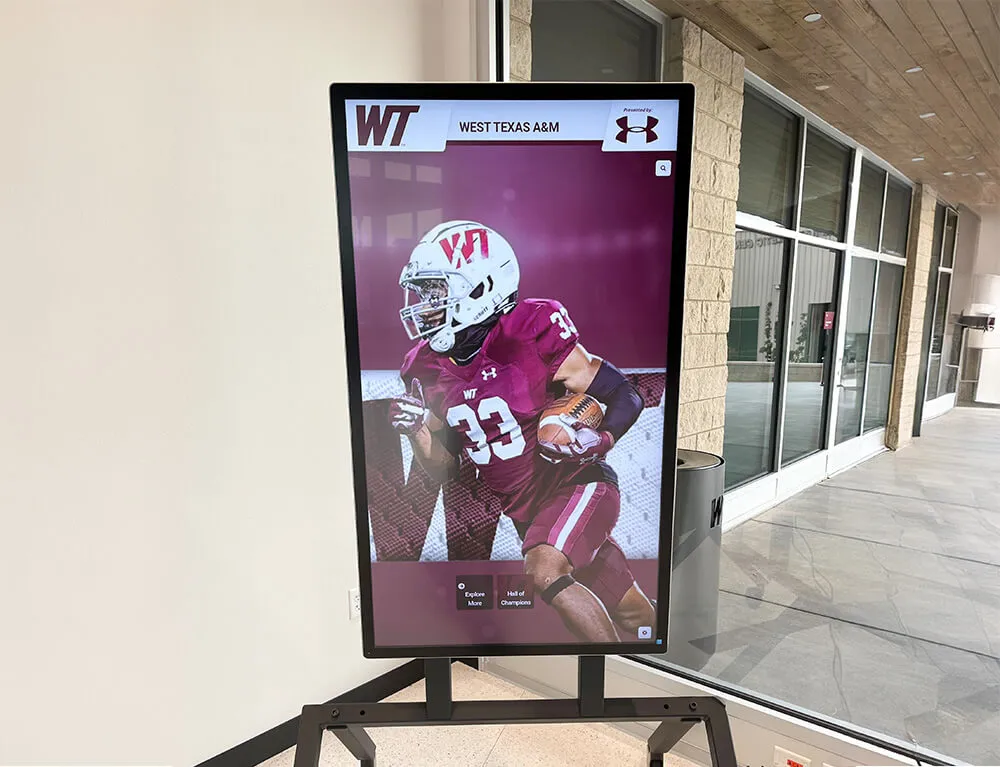
Ready to Transform Your Recognition Displays?
Visit rocketalumnisolutions.com to explore comprehensive service offerings and pricing options.
Common Questions About Interactive Display Software
How difficult is content management for non-technical staff?
Rocket's content management system is specifically designed for users without technical expertise. The intuitive interface allows authorized personnel to add profiles, update information, and modify layouts through a straightforward web portal accessible from any internet-connected device.
What happens if internet connectivity is lost?
The system caches all content locally, ensuring displays continue functioning even during internet outages. Updates sync automatically once connection is restored without requiring manual intervention.
Can existing recognition data be imported into the system?
Yes, Rocket provides data migration services that can convert information from spreadsheets, databases, or even digitize physical records into the interactive system during implementation.
Do touchscreen displays require significant maintenance?
Commercial-grade touchscreen hardware typically requires minimal maintenance beyond regular cleaning. The software platform receives automatic updates and improvements without disrupting operation or requiring user intervention.
How does an interactive display improve engagement metrics?
Organizations implementing Rocket's solutions report visitors spending 300-500% more time engaging with interactive displays compared to static alternatives. The ability to search, explore, and interact creates more memorable and meaningful recognition experiences.
